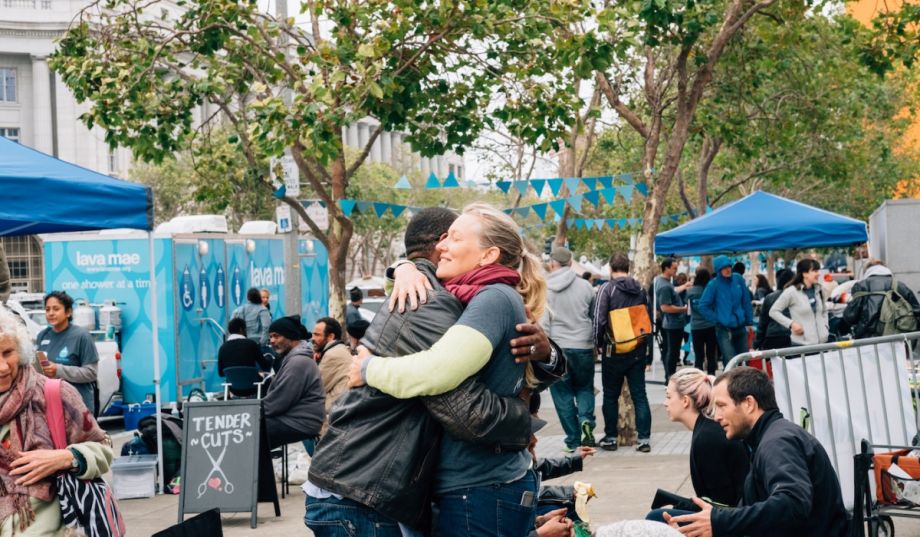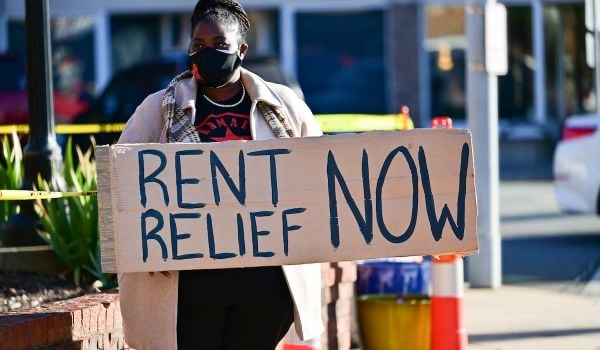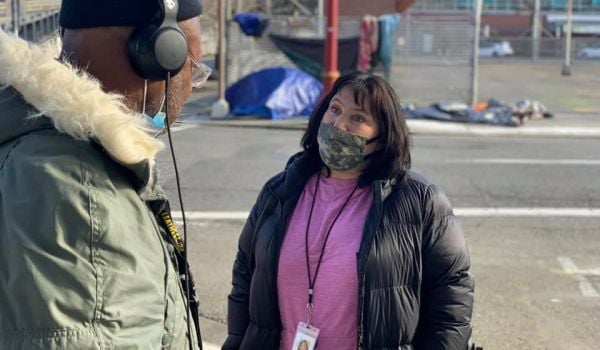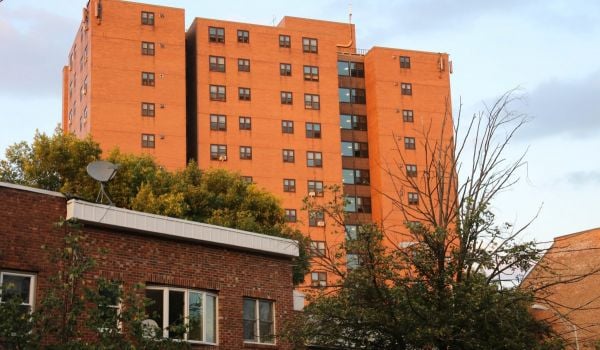A celebration with guests, volunteers and partners sharing conversation, hugs, love and laughter isn’t what most people associate with programs for unhoused people. But joyous gatherings may be the secret to creating trusted relationships that restore dignity, rekindle optimism and fuel a sense of opportunity for community members experiencing homelessness.
Local government agencies years ago recognized the need to bring services for unhoused people together in a central location. One solution in use across the country is periodic Homeless Connect events, like the Los Angeles County series organized by council members. Another California example is the city of Novato’s monthly service fair for people living in RVs on a stretch of Marin County highway.
What’s often missing from events like these is what some might consider frills: opportunities to socialize, wellness care, music and hot meals, along with essential services. My organization, mobile showers pioneer LavaMaeX, stepped in to fill that gap in 2016 by creating what we call Pop-Up Care Villages (PUCVs): festival-like events where service providers forge connections, guests get easy access to care and a break from the trauma of street living, and volunteers make real connections with their unhoused neighbors. The concept proved so compelling that LavaMaeX developed a PUCV tool kit and began training others to replicate the model.
Now community organizations across the U.S. and elsewhere are finding that throwing something akin to a street party is a low-cost, quick-turnaround way to engage people directly in responding to the homelessness crisis, raise money for more complex services and provide one-stop-shop access to critical services on the streets. Plus, it’s fun.
It’s an approach with such far-reaching benefits that while LavaMaeX has now closed its doors, the organization invested in keeping the PUCV concept alive by maintaining its toolkits and other free resources online. We know this model to be powerful, as the examples below illustrate, and LavaMaeX leaders believe it should outlive the organization that incubated it.
The heart of PUCVs and how they work
PUCVs are designed to create community and ensure that people can experience services on the spot or walk away with them. LavaMaeX worked with Site Lab Urban Studio, a service model design firm, over six months to map out the core services (they might include haircuts, medical care, legal advice, employment assistance, showers and clothing), and then tested the concept and refined it over five years.
In 2021, we released a free PUCV toolkit that walks organizers step by step through conceiving, planning and producing their own event. Since then, 740 people have downloaded the toolkit and LavaMaeX has mentored 11 organizations through PUCVs in nine cities in the U.S., Canada and the Philippines.
BeHeard Movement is a prime example. Founded in 2020 by Evan J. Dougoud, a mental health worker who couch-surfed as a young adult and experienced family trauma while growing up, the organization is the only Black-led nonprofit serving unhoused residents in Tulsa, Oklahoma.
Using the LavaMaeX toolkit, BeHeard spent a month planning its first PUCV, which brought together 580 guests, 67 partners and 55 volunteers. City council members, local media, companies including Starbucks and Walmart, food trucks, ministerial organizations and a neighborhood association all gathered for food, music and services including laundry, massages, showers, bike repairs, food stamps and more. When the DJ played “Cupid Shuffle,” about 50 people jumped up and danced.
“It was like a breath of fresh air, the energy,” Dougoud recalls. And that energy had long-lasting effects: The successful PUCV helped the nonprofit earn citywide recognition and land funding for a new permanent services hub.
PUCV organizers at BetheChangeYYC in Calgary, Canada, also found the model transformational. Their first PUCV served 600 guests and convened 27 partners and 50 volunteers. The event featured live music, clothing and personal care items and services; housing, employment and medical aid; and low-income transit applications. But “the glue of the whole event was the Indigenous drumming,” recalls co-coordinator Bill Zheng. “People were laughing, dancing, singing and rapping.”
Based on this success, he and event co-coordinator Hanna Woodward added service providers at a second event, as well as local business partners including a pharmacy and a vision store. Woodward and Zheng, a nursing student, found the PUCVs so powerful they formed their own organization, RadiCalgary, to focus on producing them.
Physical, spiritual and social benefits
PUCVs have a triple impact: The combination of essential goods and services with the spirit-lifting atmosphere makes guests feel more hopeful and human. Service providers meet their outreach goals, connect with other providers and experience a sense of fellowship. Volunteers gain a much better understanding of the experiences of unhoused people, and this “witness effect” often spurs fundraising.
The conditions that inspired LavaMaeX to create a replicable PUCV model are still present across the U.S. and Canada: Unhoused people must travel all over cities to get food, clothes, housing access and job services. Indoor municipal events, when available, can feel uninviting to people on the street, and providers often are there only to offer information.
PUCVs, in contrast, build a web of connections that tap into the creativity, resources and caring that exist in every community. They’re a way to respond to the homelessness crisis directly, with a community-led grassroots approach that makes everyone a guest at the party. We’ve planted the seeds; now may a million PUCVs grow.
Kris Kepler is outgoing CEO of LavaMaeX, a nonprofit that taught people around the world to bring mobile showers and other essential care services to the street, where unhoused people need them most.















